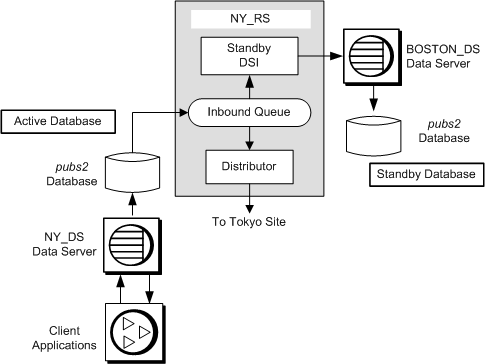In a warm standby application, Replication Server maintains a pair of databases from the same vendor, one of which acts as the backup of the other.
Typically, client applications update the active database while Replication Server maintains the other database as a standby copy of the active database. If the active database fails, or if you need to perform maintenance on the active data server or database, you can switch to the standby database (and back) with little interruption of client applications.
This figure illustrates a warm standby application operating on the BOSTON_DS data server for a pubs2 database on the NY_DS data server. The database is replicated to TOKYO_DS.
In this scenario, the pubs2 database acts as the primary database. The primary pubs2database for which a standby is created is called the active database.
